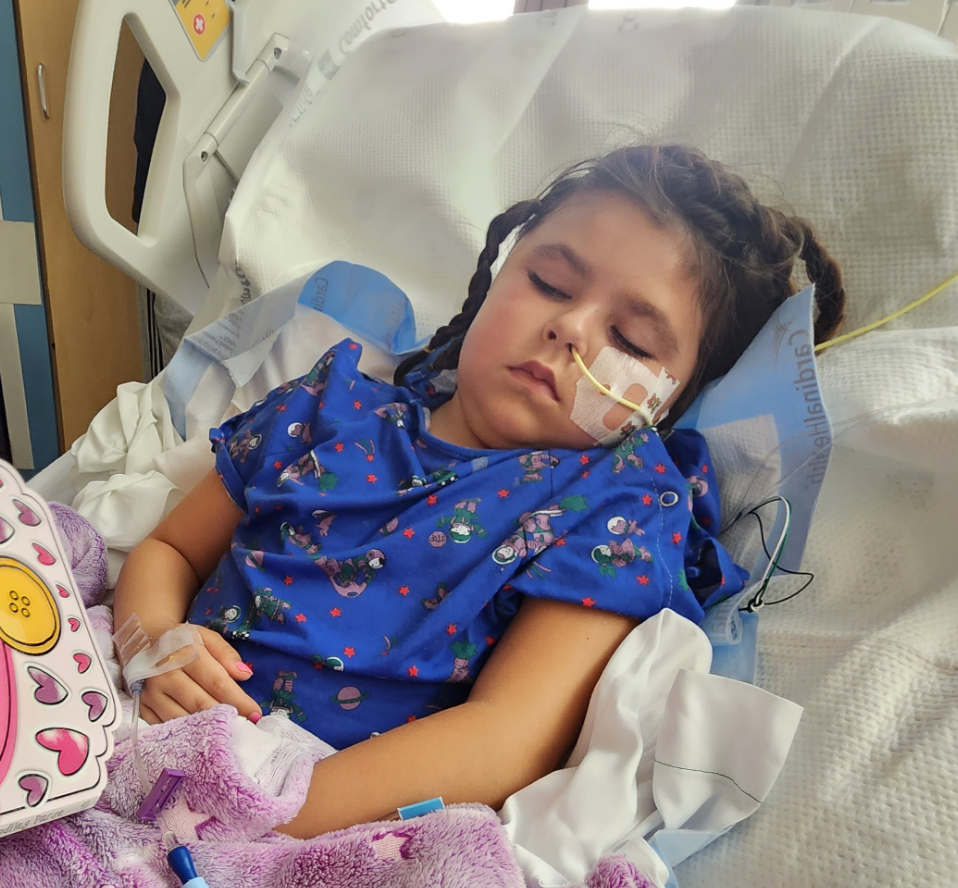Girl, 6, has surgery in which half of her brain is ‘disconnected’ to stop debilitating seizures
The child’s seizures are caused by an extremely rare condition that affects only around 500 children worldwide
Your support helps us to tell the story
From reproductive rights to climate change to Big Tech, The Independent is on the ground when the story is developing. Whether it's investigating the financials of Elon Musk's pro-Trump PAC or producing our latest documentary, 'The A Word', which shines a light on the American women fighting for reproductive rights, we know how important it is to parse out the facts from the messaging.
At such a critical moment in US history, we need reporters on the ground. Your donation allows us to keep sending journalists to speak to both sides of the story.
The Independent is trusted by Americans across the entire political spectrum. And unlike many other quality news outlets, we choose not to lock Americans out of our reporting and analysis with paywalls. We believe quality journalism should be available to everyone, paid for by those who can afford it.
Your support makes all the difference.A six-year-old girl in California has undergone a radical procedure in which half of her brain was removed after being diagnosed with a rare condition that causes debilitating seizures.
Brianna Bodley was diagnosed with Radmussen’s encephalitis (RE), estimated to affect no more than 500 children globally, after she began having seizures in 2022.
She was first diagnosed with epilepsy but doctors eventually discovered she was suffering from RE, according to a GoFundMe page organised by Crystal Bodley, Brianna’s mother.
RE is a chronic inflammatory neurological disease, and it usually affects just one side of the brain. It generally affects children under the age of 10 but can also occur in adults, according to the National Institutes of Health (NIH).
In addition to seizures, the disease causes inflammation of the brain, mental deterioration, and the progressive loss of motor skills and speech.
The disease often causes permanent neurological deficits in children. For some, surgery can stop the disease’s progression, but most children with RE end up suffering cognitive deficits, speech problems, and partial paralysis.
Although it’s rare, RE does sometimes spread from one half of the brain to the other.
Doctors tried a number of treatments to slow the progression of the disease in Bodley when she was first diagnosed.
She was put on six different seizure medications, and doctors tried intravenous immunoglobulin (IVIG) treatments to manage her pain. She was also given multiple infusions of a cancer drug called Rituximab but it didn’t produce long-lasting results.
“She was in pain due to her having non stop seizures which are shown in her leg that jerks all day long even when she’s sleeping,” according to the GoFundMe page.

The family decided to try a hemispherectomy, a procedure where the diseased half the brain is removed. According to UCLA Health, hemispherectomy is among the best treatments to stop seizures for patients who qualify for the procedure.
Hemispherectomies are usually considered for children that have lost strength on one side of the body. Children who are good candidates for the procedure may have already lost part of their vision and dexterity in one hand. In these cases, loss of function as a result of a hemispherectomy is often minimal.
Hemispherectomies should be performed sooner rather than later in children who make good candidates, according to UCLA Health, as the earlier the surgery is performed, “the greater the ability for the child to have a life as close to normal as possible”.
There are two main types of hemispherectomies - anatomic and functional. In the former, the diseased half the brain is physically removed. In the latter, the whole half of the diseased brain may not be removed, but it is disconnected from the healthy half.
Bodley’s family said the procedure does not change who she is. Her mother toldABC7 Los Angelesthat “Brianna will still be the same person, even after disconnecting half of her brain”.
Hemispherectomies can be life-changing for children who qualify, but complications do occasionally arise, including aseptic meningitis, infection, postoperative fevers, and the need for a blood transfusion.
A condition called hydrocephalus, caused by excess spinal fluid in the brain, can also occur immediately following or years after a hemispherectomy. The condition can be treated by the placement of a shunt.
Following her hemispherectomy on 2 October, Bodley was moved out of the intensive care unit (ICU) but remains recovering in hospital.
Despite the surgery, she will not recover her fine motor skills in her left hand, or the peripheral vision in her left eye, her GoFundMe page says.
Her care team is currently focusing on pain management and the little girl will eventually require speech therapy as well as rehab that will help her learn to use her arm and walk again.
Bodley’s family said they are hopeful for her future despite what she’s been through. As her mother wrote on her GoFundMe page: “She has a very long road of recovery but, she is a strong and determined little girl. I know she will do great things and overcome all of this.”




Join our commenting forum
Join thought-provoking conversations, follow other Independent readers and see their replies
Comments